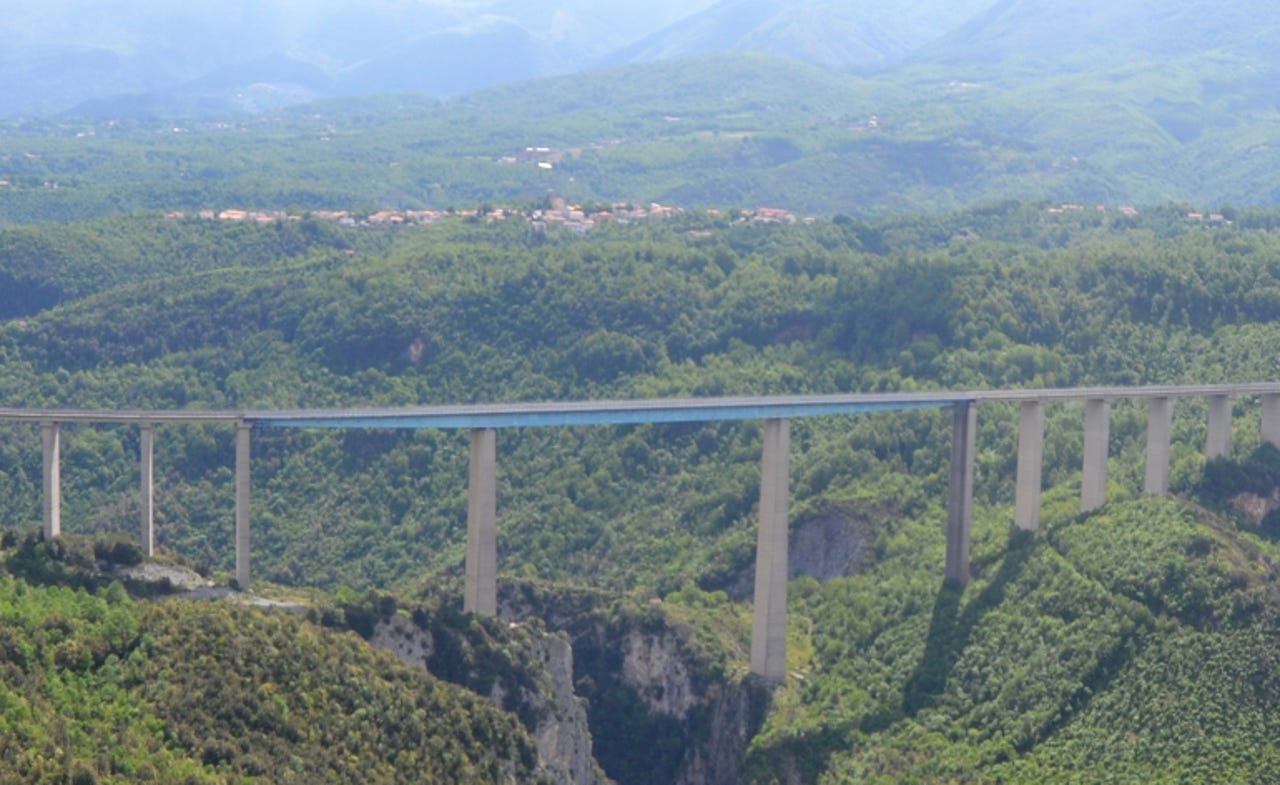How do you spot a crack in a vast bridge? That's where IoT and drones come in


Bridges, viaducts, dams: they're all large structures that have to be constantly monitored for cracks, deformations and shifts that could affect the way they're used, or potentially cause disasters.
Often, though, carrying out those observations is a problem in itself, because the equipment needed for the job is bulky and expensive, and available only for shorts periods of time.
To overcome these issues, Italy's Ministry of Education, Universities and Research (MIUR) is putting €10m ($10.6m) into a two-year joint research project conducted by the Polytechnic of Turin and electronics and semiconductor firm STMicroelectronics (STM).
See also
"The project springs from the creation of very small sensors, just 1cm [0.4 inch] long and 1mm [0.04 inch] thick, which will be used to gather data about the tension, vibration and geometrical configuration of concrete infrastructure," Polytechnic of Turin professor Giuseppe Mancini, who is coordinating the initiative, says.
Thanks to microelectronics and sensors, monitoring costs can be cut between 10 and 100 times, depending on the kind of infrastructure and the number of devices employed.
Another advantage of the chips is that they are also capable of collecting data continuously and sending it via the internet to a control center, where it is analyzed and searched for anomalies.
A team of academics started to develop prototype sensors two years ago, when the idea was first presented to MIUR. The devices were then industrialized by STM and are currently being tested in three buildings in Rome currently undergoing renovations: the Zecca Palace, the three EUR Towers and the former Institute of Geology of Largo Susanna.
Next year, the plan is to deploy the system on the highest bridge in Italy. The 1974 Italia Viaduct on the Napoli-Reggio Calabria highway in the south of Italy is crossed daily by a significant number of vehicles and has been subject, in the recent past, to serious damages, which caused the collapse of part of its structure.
But before large-scale deployment of the sensors can take place, some problems will have to be addressed. As the number of structures monitored grows, so do the chances of false alarms and the difficulties in handling the amounts of information gathered.
Mancini says ANAS, the company in charge of the construction and maintenance of highways in Italy, owns 14,000 bridges, while the state railways have 17,000.
"If we had to monitor all, or a large part of them, we'd have to build some kind of artificial intelligence that could help us make a first screening of the data to find what's worth evaluating further," he said.
That's exactly the focus of the next phase of the project -- and that's also why the Polytechnic has created two separate spinoffs: one focused on data collection, and the other on data management.
Another challenge that needs addressing in the near future is how to collect the data when the structures are difficult to reach, or located in areas where internet coverage is not present. That's where drones come into play.
"All new viaducts are connected with optical fibers to datacenters," Mancini says.
"But in some scenarios, the only way to read the data would be to send unmanned aerial vehicles to briefly activate the sensor via RFID or other similar technologies and receive the information it is storing. Then the drones will fly to the nearest point where an internet signal is available and upload the information to a server."
One such case could be the Ceresole dam, between Liguria and Piedmont, which has been identified as a possible testing point.
All in all, the greatest advantage of this new system for monitoring large structures, researchers say, is that it will allow for a more proactive approach to maintenance, rather than the traditional, reactive one.
"Our hope is to be able to identify even the faintest signs of decay before they turn into real issues. This way, we'll extend the structures' lifecycles without having to resort to complex, expansive interventions as a last resort, when the damage is done," Mancini says.